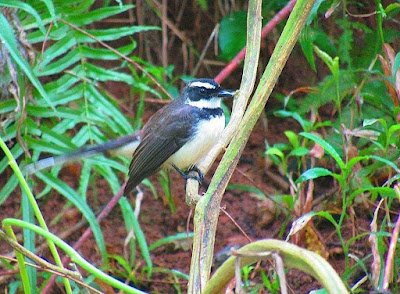PRELUDE:
Lasam is a land-locked municipality of Cagayan in the eastern hemline of the formidable Cordillera mountains with Sicalao as the largest barangay...
 |
| The interior of one of the many chambers of Isus Cave |
THE TROPICAL REGIME OF SICALAO CAVES
📌 Isus Cave², Sicalao, Lasam, Cagayan
Cloaked with magnificent evergreen forests growing prodigiously the entire year of a well-balanced rain-sun barrage, Sicalao has enjoyed the bounty of a tropical rainforest endowed with a treasury of extensive wildlife with timeless confidence.
Considered as the last ecological frontier of Lasam, Sicalao hosts wonders of extraordinary features almost strange, unheard-of to the oblivious: A diversified flora and fauna, a volcanic mountain and karsts, calcareous and limestone hills, highest peaks and point, underground river still barely probed, and tunneling network of caves only the undauntable adventurers would dare to conquer.
 |
| The thick rainforests of Sicalao |
With the Zinundungan River meandering right at the center of it, fed by the Sicalao stream emanating deep into its massive forested interior, it sustains the entire valley of the Zinundungan and the enormous rice and crop fields of Lasam.
The tropical regime of alternating wet and dry gives way to the more complicated shadings beneath the forest floor of Sicalao, in return supporting myriad of species of animals and plant forms.
 |
| Super-massive tree buttress in the tropics |
The limestones are wet, dominated by lichens (lumot) and alluring epiphytes in multifold of morphology almost impossible to resist uprooting.
The thickness of fallen leaves from valuable trees such as marakape (dipterocarpaceae spp.), maratiesa, magallayaw, narra (pterocarpus), labting and lowland bushes sustains the soil by its richness in organic matter that eventually harbors incalculable number of individual species from scorpions (manggagama), termites (anay), stinging ants (ammimisay), as well as vertebrates such as forest frogs (ampipilat, polypedates), monkeys (sunggo, macaque), snakes, green crested lizards (bannagaw), varanus (banias), wild boar (alingo), birds and possibly cloud rats (bao ti bantay).
 |
| The fruit of "marakape" tree |
Epiphytic plants (aruy-oy) hanging gracefully among branches are scenes to behold. Huge tree trunks, butresses as gargantuan as a truck are magical, the experience seems like a time travel into the Amazonian rainforest of South American realm.
Up high on the slopes of a limestone mountain are numerous cave entrances, barely attained, some of which still left unexplored. These narrow tubes, each that leads to a larger, cathedral domes are oppressive, unfriendly, guarded by scorpions and monstrous ants with mega killing-jaws and stinger on their rear.
 |
| Cathedral-dome of Isus Cave in Sicalao |
It is not something a mediocre traveler would wish to have in his bucket list.
But it's our peculiar sense of accomplishment upon triumph that drives us to continually strive for our desire of interests.
Stinging, creepy and wild.
These caves may have been pacified by their nearness to a local Agta community near the Sicalao creek but unpredictable and powerful, the Sicalao caves assure that no wilderness- left in its natural state, is ever tamed.
 |
| The external of the cave dominated by lichens |
And taming the caves somehow requires a Tarzan-stamina, adaptive into arboreal living on the viny landscape. An almost 90-degree slope cliff face awaits every intrepid spelunkers, crumbled rocks pose perils upon a misstep and the menace of deadly fangs, stingers and hypersensitive plant trichomes and thorns is lurking inconspicuously, cryptically hidden among the dead leaves or beneath disintegrating logs.
It was here on Isus Cave in Sicalao that I began to appreciate the intricacies of landforms and the biodiversity of the municipality of Lasam.
 |
| A Philippine fantail making-up the biodiversity of Lasam |
While Sicalao could and might still have a dozen of caves, a couple has fascinated our team for their bizarre characteristics: One of which, the Isus, has series of small tunnels and orifices leading to one another.
Caves in karst landscapes are splendid due to their grand interiors well decorated with stalactites, stalagmites and other speleotherms. This cave has more swiftlets and swallows (sallapingaw) than there are bats (panniki or kurarapnit) which we normally know it should be these flying mammals' prime dominion.
 |
| A swiftlet in its edible nest |
Contrastingly, the nearby Oning cave might be the most dangerous of all known caves in the municipality because of its squeezingly tight opening, vertical descent and a distressing rapid flowing stream inside of unknown depth.
 |
| One of the creepy entrances of the Isus Cave |
 |
| Liocheles scorpion found in the rainforests of Sicalao |
Our team failed to investigate this frightening but startling beacon of the last ecological frontier for safety reasons- at least for now.
But our desire for curiousity is still paramount than the dangers our explorations could offer; it will not last for long before our return into the wild, continually exploring the great outdoors.
 |
| Mang Jose, an Agta tourist guide |
https://m.facebook.com/story.php?story_fbid=3158995247686567&id=100007283687906
Supplemental:
https://m.facebook.com/story.php?story_fbid=2798056677113761&id=100007283687906
https://m.facebook.com/story.php?story_fbid=2759065644346198&id=100007283687906
#IntoTheWildSeries #TheGreatOutdoors #IsusCave #OningCave #TropicalRainforest
No comments:
Post a Comment